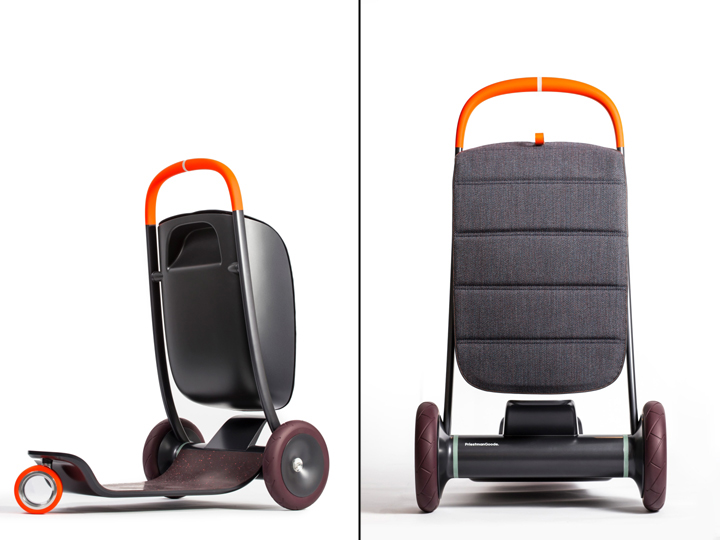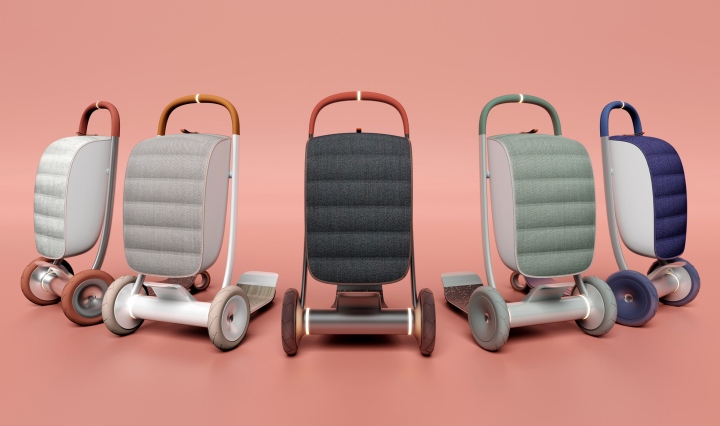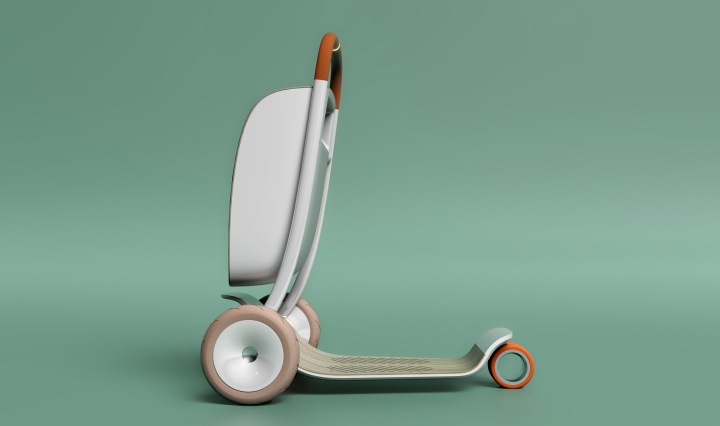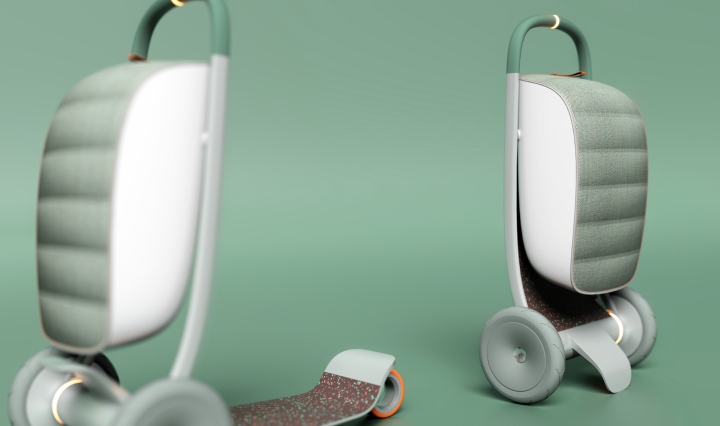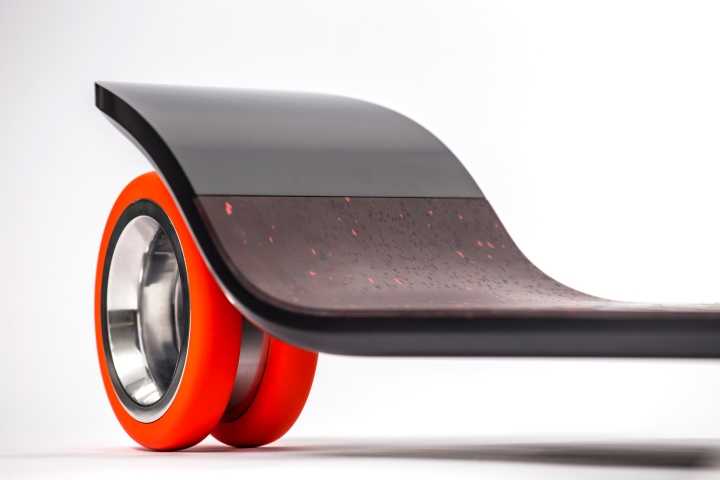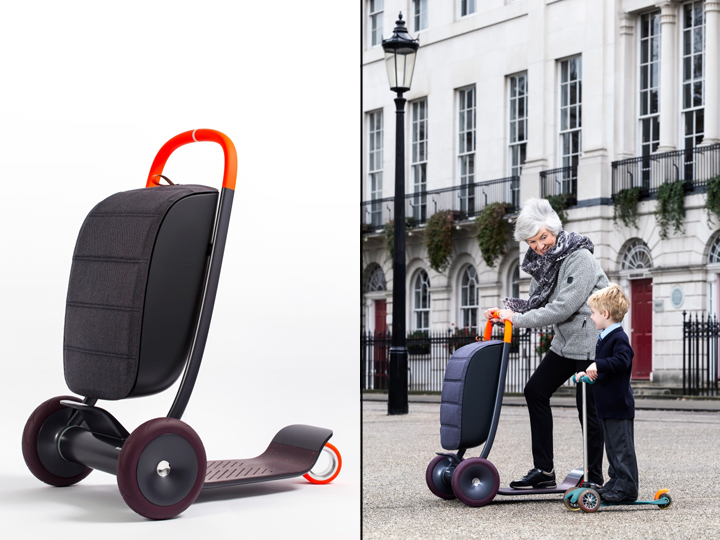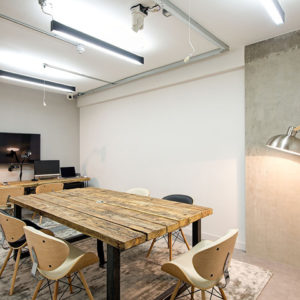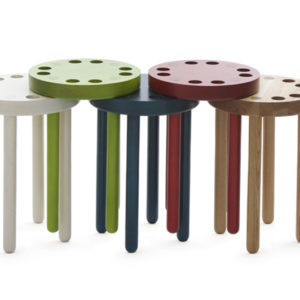
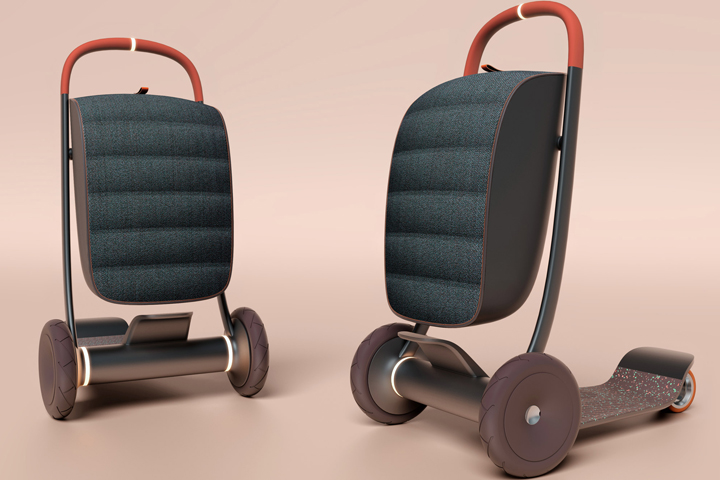

This scooter with an trolley-like storage compartment was designed by London studio PriestmanGoode to make it easier for people with limited mobility to get around. The Scooter For Life was commissioned for the New Old exhibition at London’s Design Museum, which explores how designers can enhance people’s day-to-day experiences in later life. PriestmanGoode co-founder Paul Priestman saw the project as an opportunity to develop a product that not only supports older people as their mobility decreases, but also encourages them to stay physically active for longer.
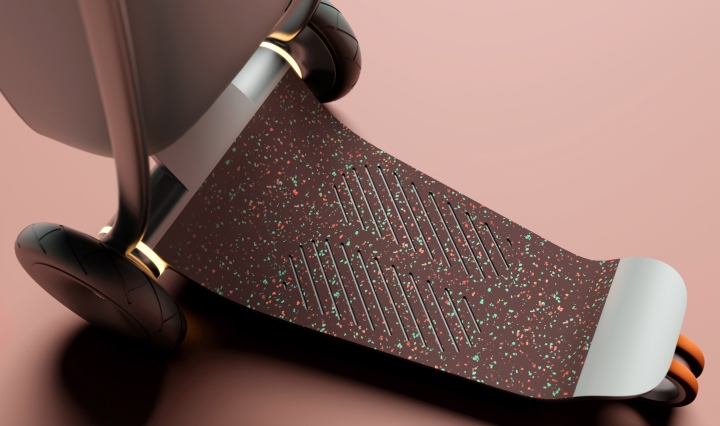
“Designers have an important part to play in affecting behaviour,” said Priestman. “Over the course of many brainstorming sessions, we came to a number of conclusions.” “Firstly that we wanted to design something for all ages, a product for life, a brand that could follow you through your life as your mobility needs evolved, and that our solution would be a product designed to help people stay fitter for longer and provide older demographics with independence, safety and security.”
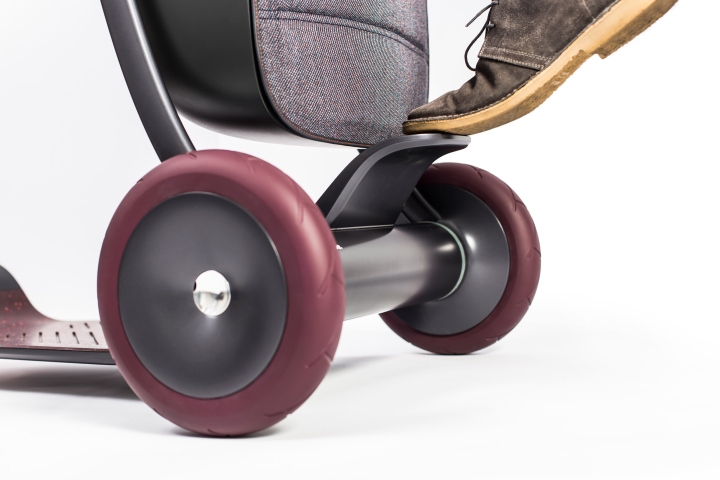
The fold-down adaptable design is based on a micro scooter – an object Priestman describes as “ubiquitous” in many of today’s families, but that older people are rarely seen with. “At some stage, people stop using them,” he said. “This may be because of stigma, safety concerns or simply the fact that older generations have not had scooters before, which creates a barrier to late adoption.”
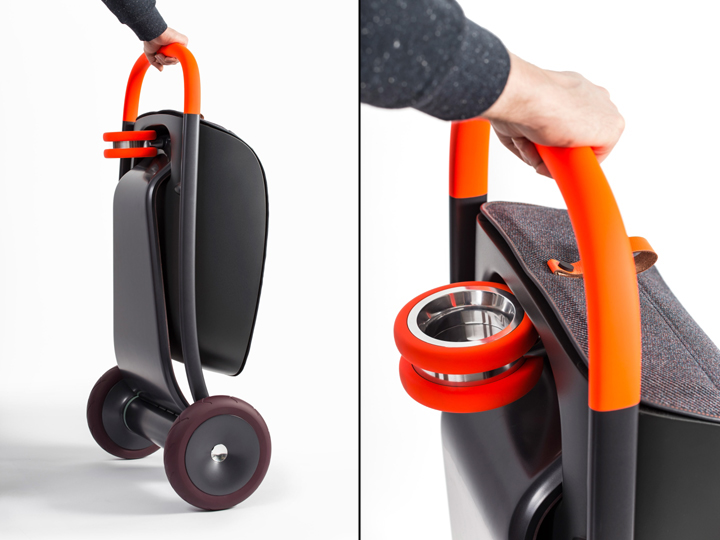
As part of the development process, the studio conducted a number of research sessions and focus groups. In one, a participant described a traditional mobility scooter as having a “stench of decay”. “Many of the users we spoke to thought that current solutions felt like having one foot in the grave,” he said. “So we wanted to design something that was both beautiful as well as highly practical.”
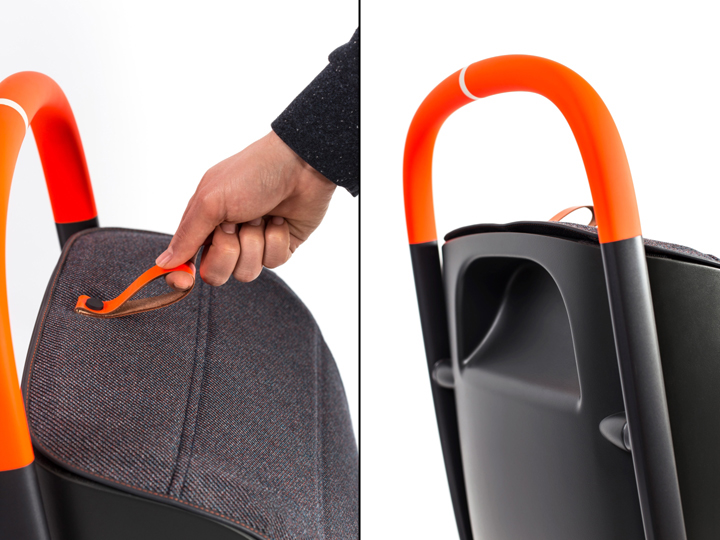
The research groups enabled the studio to come up with a checklist of necessities the scooter would need to have. Firstly, the user would need to be able to take it on public transport or into a shop, they should be able to fold it down, there needed to be space to store groceries, and it had to be able to be taken into a flat or a house – as opposed to being parked outside.

“Based on these key considerations, we developed the Scooter for Life, a brand of products for all ages, that is highly adaptable and helps older demographics improve their mobility on a very practical basis, but can also help users feel safer in their own homes,” added Priestman.

To increase stability, the prototype has two larger wheels at the front and a smaller third wheel at the back. It only moves when the brakes are released. A basket at the front operates as a shopping trolly, while an optional seat and electric power mode takes strain off users when they are less able to walk. The scooter could even register regular routes, as well as recognising and learning where there are unsteady sections of pavement. The studio also envisages it having a “take me home” function for users with mild forms of dementia.
